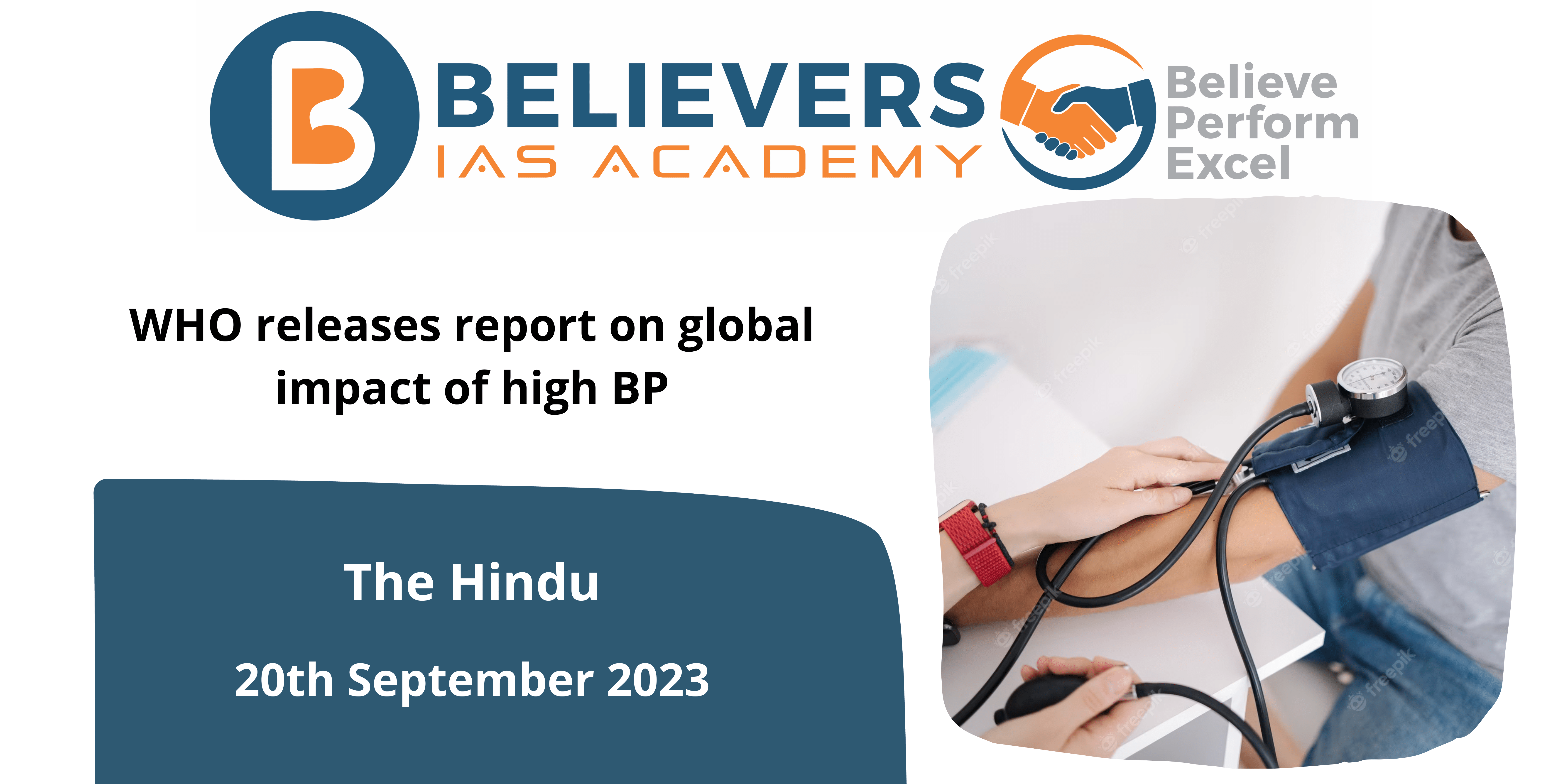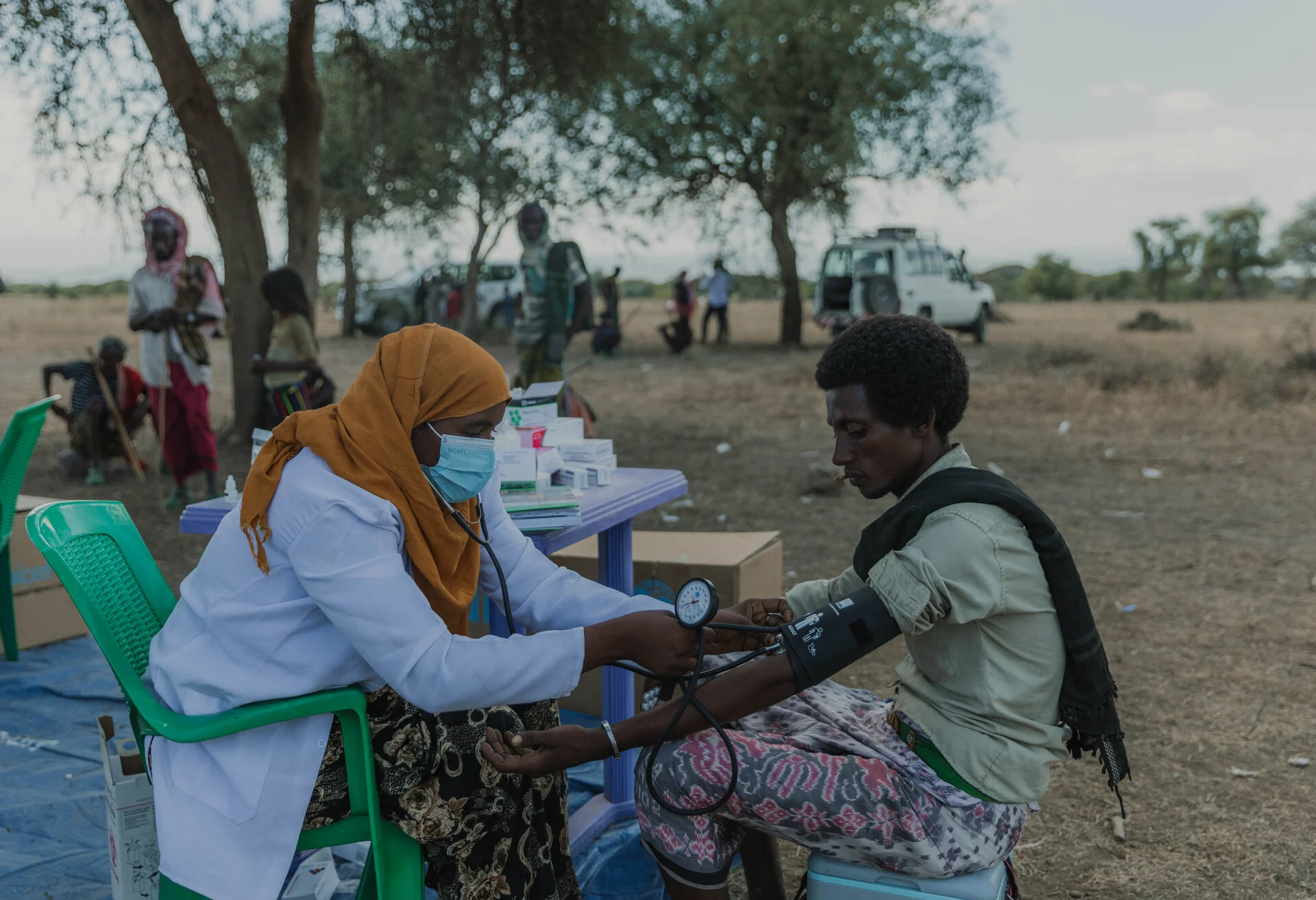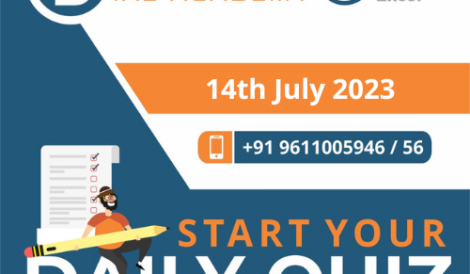WHO releases report on global impact of high BP
Context
The World Health Organization (WHO) said in its first-ever report on the global impact of high blood pressure on Tuesday that approximately four out of every five people with hypertension are not receiving adequate treatment, but if countries can increase coverage, 76 million deaths could be avoided between 2023 and 2050.
What is Hypertension?
High blood pressure, or hypertension, occurs when the force of blood pushing against artery walls is consistently too high. This causes the heart to work harder to pump blood.
What are the symptoms of BP?
- Severe headaches
- Chest pain
- Dizziness
- Difficulty breathing
- Nausea
- Vomiting
- Blurred vision or other vision changes
- Anxiety
- High blood pressure can cause the lower left heart chamber to thicken. This increases the risk of heart attack, heart failure, and sudden cardiac death.
What are the four stages of the BP?
- Elevated blood pressure levels between 120-129/less than 80
- Hypertension stage 1 is 130-139/80-89 mmHg
- Hypertension stage 2 is 140/90 mmHg or more
- Hypertensive crisis is higher than 180/120 or higher
What is the global impact of Hypertension?
- Prevalence of Hypertension: One in three persons globally suffers from hypertension, which is a common health condition. Between 1990 and 2019, the global population with hypertension doubled, totalling 1.3 billion people.
- Impact on the world: Hypertension is a major risk factor for many illnesses, such as stroke, heart attack, heart failure, renal damage, and more. It is the main global cause of mortality and disability.
What is the impact of the BP in India?
- Prevalence: India has a high prevalence of hypertension. In India, almost 24% of men and 21% of women had hypertension, according to the 2019–20 National Family Health Survey (NFHS–5). These numbers show a considerable increase from the survey’s previous round (2015–16), highlighting a growing health risk.
- Health Risks: A number of serious health issues are greatly increased by hypertension. It raises the risk of cardiovascular disorders like renal damage, heart attack, heart failure, and stroke. Both premature death and disabilities may result from these illnesses.
- Treatment Gap: India has a sizable treatment gap despite having a high prevalence of hypertension. In India, between 2016 and 2020, less than one-fourth of hypertension individuals got their blood pressure under control. This indicates that a significant number of people with hypertension are not being adequately treated or managed.
- Regional Disparities: In India, different areas have different experiences with hypertension and how to manage it. The prevalence of hypertension and the accessibility of healthcare resources and services may vary significantly across the nation.
- Economic Burden: The cost of treating hypertension in India is significant for both patients and the healthcare system. As well as the potential costs of consequences, the costs of diagnosing, managing, and treating hypertension can be high.
How can we improve the health conditions of the people?
- changes to one’s way of life
-
-
- Healthy Diet: Encourage them to have a healthy diet that is high in fruits, vegetables, whole grains, lean proteins, and low-fat dairy items. It’s crucial to limit your intake of sodium (salt).
- Weight management: Encourage those who are overweight or obese to lose weight because obesity can raise blood pressure.
- Weight Management: Encourage regular physical activity to help decrease blood pressure and enhance overall cardiovascular health, such as brisk walking, swimming, or cycling.
- Limit alcohol: Limiting alcohol consumption is advised since excessive alcohol drinking might cause blood pressure to rise.
-
- Interventions in healthcare
-
-
- Regular checkups: Promote routine blood pressure monitoring, especially for people who are more at risk for hypertension.
- Management of Medication: When necessary, prescribe and oversee antihypertensive drugs. Make sure that patients are aware of the significance of following prescribed drug schedules.
- Lifestyle Counseling: As the initial step in controlling hypertension, advise on lifestyle changes. Encourage patients to make long-lasting improvements.
- Risk Assessment: Evaluate and deal with additional cardiovascular risk factors, like diabetes and excessive cholesterol, which frequently coexist with hypertension.
-
- Health Promotion Strategies:
-
- Awareness Programme: Launch public awareness programs to inform people about the dangers of high blood pressure, the value of routine blood pressure checks, and the advantages of leading a healthy lifestyle.
- Community Outreach: Involve localities in programs that encourage physical exercise, access to wholesome foods, and quitting smoking.
- School Programs: Include health education in the curriculum to educate kids on the value of leading healthy lives from an early age.
- Workplace wellness: Encourage companies to develop workplace wellness initiatives that support a healthy diet, regular exercise, and stress management.
Conclusion
In conclusion, hypertension is a serious health problem that affects a large portion of India’s population. To lessen the effects of hypertension and avoid associated consequences in the Indian population, efforts must be made to increase awareness, early detection, and efficient management of the condition.





